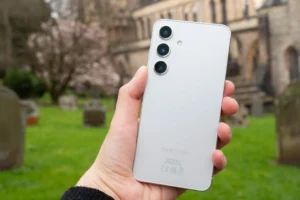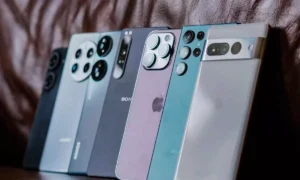In 2024, smartphone cameras will have many new features that will revolutionize mobile photography. Artificial intelligence, computational photography, and sensor technology will give handheld devices previously unimaginable capabilities. These new features will give users greater creative flexibility, better image quality, and more immersive ways to capture and interact with the world.
Stunning detail from ultra-high-resolution sensors
Smartphone cameras with 200-megapixel sensors will launch in 2024. These sensors capture incredible detail, allowing users to zoom in on photos without losing clarity. Thanks to the larger sensor and pixel binning technology, these cameras perform well in low light and reproduce colors accurately. This will allow everyone to enjoy high-quality smartphone photography, resulting in clearer, more vibrant photos, even in low light.
Use AI to optimize scenarios
By 2024, AI-driven scene enhancement will be commonplace on smartphone cameras. Camera AI optimizes hundreds of scenes, including landscapes, portraits, food, and night scenes. It optimizes exposure, contrast, and color balance based on the situation, eliminating the need for manual input. This feature allows users to take professional-quality photos regardless of their photography skills.
Real-time AR filters
Social media has been using AR filters for years, but in 2024, smartphones will be equipped with high-resolution real-time filters. These filters adapt to lighting and facial expressions for unprecedented realism. The camera app allows users to make small and erratic changes. These filters use depth sensors and AI-powered tracking combined with real-life components to make photo and video editing fun and interactive.
AI/Computational Photography
Smartphone camera night mode is becoming increasingly important and was upgraded in 2024. Artificial intelligence and computational photography make night mode photos brighter and clearer in extremely low light. Improved algorithms preserve features, colors, and shadows while reducing noise. Better stabilization in advanced night settings makes handheld shots comparable to those shot with a tripod, making low-light photography easier to use and adjust.
Bokeh and Depth Control for Realism
Smartphone cameras can now produce a more realistic “bokeh” effect. Thanks to a new depth sensor and artificial intelligence algorithms, bokeh replicates professional shots and better separates the subject from the background. After taking a photo, users can change the intensity and shape of the bokeh effect to adjust depth and focus. Portrait photography benefits from the cinematic style of this feature.
Use Periscope Lenses to Enhance Zoom
Smartphones with 10x optical zoom will once again use periscope lenses in 2024. These foldable lenses provide greater zoom power without bulking up the camera module. Periscope lenses use high-resolution sensors and image stabilization to capture clear, detailed photos from a distance. AI algorithms enhance enlarged photos, remove noise, and increase clarity to deliver a true telephoto experience in a small smartphone.
Long Exposures and Multiple Exposures
In smartphones in 2024, multiple exposure and long exposure capabilities will give creative photographers more options. Multiple exposure mode will let users combine multiple photos for unique compositions and effects. Use long exposure mode to capture motion blur by shooting light trails or flowing water. AI can stabilize photos and adjust exposure to prevent overexposure in certain modes. Mobile photography enthusiasts will love these features as they allow for more artistic expression.
Advanced Stabilized 8K Video
In the best smartphones, 8K video recording captures even the smallest details. The feature will gain better stability in 2024, allowing for smooth handheld shooting. Users can record cinematic videos without a gimbal using AI-powered stabilization. The ability to extract high-resolution photos from 8K video lets customers capture precise moments.
AI-powered editing enables rapid improvements
As cameras capture more detail, smartphone makers are adding AI-powered editing features. These tools automatically change the color, contrast, and sharpness of the photo with just a tap. They can also be affected thanks to front camera depth sensors. AI enhances lighting and angles to complement each person’s distinctive characteristics, making selfies more enjoyable.
Lifelike Colors with Real-Time
HDR HDR has long been necessary for balanced high-contrast photographs. Smartphone cameras deliver real-time HDR processing in 2024, displaying HDR effects in the viewfinder. This feature balances highlights and shadows during capture, producing photographs with vivid colors and detail. Real-time HDR is ideal for outdoor and landscape photography, where illumination can shift considerably.
Gesture-based shooting controls
Gesture-based controls on 2024 smartphones make photo operation easy. These controls are great for group and hands-free selfies. The camera automatically takes photos or videos when it detects hand movements like a raised hand or peace sign. Advanced AI recognizes motions and promptly activates the camera, making this feature more user-friendly.
Final Thoughts
Mobile Photography Future Technology and user experience are improving smartphone cameras in 2024, giving everyone professional-grade photography and video. Mobile phones are catching up to DSLRs because of AI, high-resolution sensors, multi-camera setups, and more. These new capabilities let users express their creativity, capture moments with clarity, and easily share high-quality content. As mobile camera technology advances, photography’s future is in our hands.





